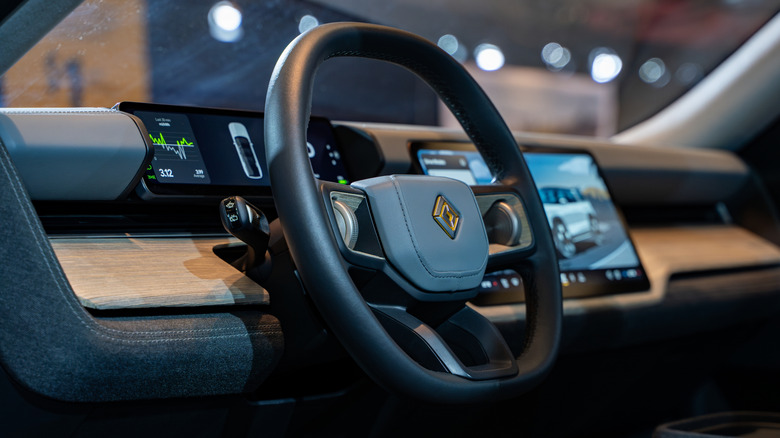In a recent interview with Yahoo! Finance, Rivian Chief Software Engineer Wassym Bensaid revealed that the EV startup will be providing the underlying tech stack for all future EVs from the Volkswagen Group. The partnership between the two companies was first announced last year, when the German auto conglomerate agreed to invest $5 billion into their much smaller American friend in exchange for its software and electrics knowhow. That eventually lead to the two creating a joint venture together to allow the free flow of intellectual property while keeping the actual brands separate.
Bensaid said that Rivian’s upcoming R2 SUV would be the technological foundation for the VW Group’s future offerings “in a way where we will still allow each of the brands to express their own identity.” In other words, Audi’s future tech platform might be different from Bentley’s or Lamborghini’s, but they would all be building off of the same electric guts as the R2.
This is probably welcome news for the German giant, as the woes of their own internal tech division, Cariad, have lead to delays from Porsche and Audi. That has in turn lead to layoffs in the division itself. Basically, Volkswagen and its brands have decades of mechanical engineering experience, but comparatively little in software engineering. And it turns out their electrical engineers are in for a bit of a wake up call as well.
More than just software: the zonal architecture revolution
Obviously, it would be nice to get a car with a fast and bug-free infotainment system. But Rivian is offering quite a bit more than a refreshed touchscreen UI. Starting with the 2025 models of the R1T and R1S, the American startup switched to a zonal architecture for its electrics, which allowed it to remove a truly jaw-dropping 1.6 miles of wires from every single car (which in turn saved it 44 pounds in weight).
First developed by Tesla, zonal architecture essentially switches the electrical design of the car from being super centralized, with every electric part reporting back to a central processor, to a decentralized one with regional hubs (zones) that the electrics in that area report to (which then themselves report back to the central hub). That makes for a vastly more efficient management of car performance, reducing the total ECUs needed from 17 to seven. This revolution in electrical engineering is sometimes called software-designed vehicles (SDV), since the physical wiring is only engineered after the software team figures out what would be the best way to run the car.
For all its carmaking prowess, this newfangled method of electrical engineering is not something VW knows how to do right now. Little Rivian, more tech-focused and starting essentially from scratch, was able to pivot their entire production to zonal architecture. What Rivian didn’t have was, of course, money, since it still can’t make any. So selling their tech stack IP to VW for $5 billion was a pretty good move for both parties.




